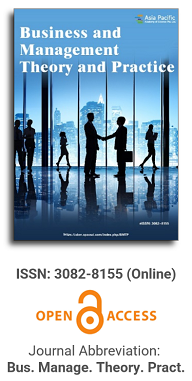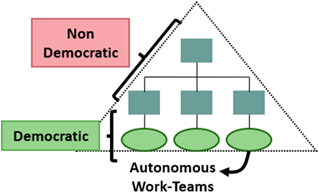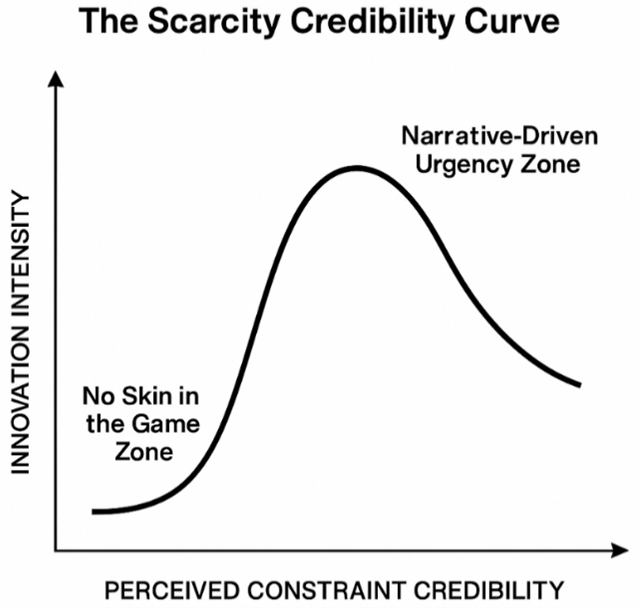
Asia Pacific Academy of Science Pte. Ltd. (APACSCI) specializes in international journal publishing. APACSCI adopts the open access publishing model and provides an important communication bridge for academic groups whose interest fields include engineering, technology, medicine, computer, mathematics, agriculture and forestry, and environment.


The impact of enterprise digital transformation on management tone manipulation and its ‘double-edged sword’ effect
Vol 2, Issue 2, 2025
Download PDF
Abstract
Does digital transformation, as an important means for firms to gain market competitiveness, reduce the incentives for management tone manipulation? This paper examines the effect of corporate digital transformation on management tone manipulation and its mechanism from the perspectives of psychology and behavioral finance. The results show that the relationship between digital transformation and tone of voice manipulation is inverted ‘U’ shape, with digital transformation increasing the degree of tone of voice manipulation in the early stage and decreasing it in the later stage. The mediation test concludes that digital transformation mainly affects management tone manipulation by influencing the level of information asymmetry and financing constraints. In addition, the effect of digital transformation on management tone manipulation is more pronounced in firms with more myopic management. This paper examines the internal logic of the impact of digital transformation on management tone manipulation from the perspective of management, reveals the ‘double-edged sword’ effect of digital transformation on management tone manipulation, and enriches the literature on digital transformation and management tone manipulation.
Keywords
References
1. Reis J, Amorim M, Melão N, Matos P. Digital transformation: A literature review and guidelines for future research. In: Proceedings of the 14th Iberian Conference on Information Systems and Technologies (CISTI); 19–22 June 2019; Coimbra, Portugal.
2. Chen J, Chen Y. The role of digital transformation in the retail industry. Journal of Retailing and Consumer Services. 2020 55: 102109.
3. Liu J. Enterprises towards a new digital path. Tsinghua Management Review. 2019; 9: 75–83.
4. Chen D, Wang L, Chen A. Digitization and Strategic Management Theory—Review, Challenges, and Prospects. Management World. 2020; 5: 220–236.
5. Rabbiosi L, Santangelo GD. Parent Company Benefits from Reverse Knowledge Transfer: The Role of the Liability of Newness in MNEs. Journal of World Business. 2013; 48(1): 160–170.
6. Karl SRW, Maximilian W. Building dynamic capabilities for digital transformation: An ongoing process of strategic renewal. Long Range Planning. 2018; 3: 326–349.
7. Qi Y, Xiao X. Enterprise management transformation in the digital economy era. Management World. 2020; 6: 135–152.
8. João JMF, Cristina IF, Fernando AFF. To be or not to be digital, that is the question: Firm innovation and performance. Journal of Business Research. 2019; 101: 583–590.
9. Chi M, Ye D, Wang J, et al. How can Chinese SMEs enhance new product development performance—From a digital empowerment perspective. Nankai Management Review. 2020; 3: 63–75.
10. Kohtamäki M, Vinit P, Pankaj CP, Heiko G. The relationship between digitalization and servitization: The role of servitization in capturing the financial potential of digitalization. Technological Forecasting & Social Change. 2020; 151: 119–214.
11. Zhao T, Zhang Z, Liang S. Digital economy, entrepreneurial activity, and high-quality development—Empirical evidence from Chinese cities. Management World. 2020; 36(10): 65–76.
12. Zhao C, Wang W, Li X. How does digital transformation affect total factor productivity of enterprises. Finance & Trade Economics. 2021; 7: 114–129.
13. Wu F, Hu H, Lin H, et al. Enterprise digital transformation and capital market performance—Evidence from stock liquidity. Management World. 2021; 7: 130–144.
14. Gallardo MÁ, Chávez MS, Maldonado MT. Digital transformation, digital dividends and entrepreneurship: A quantitative analysis. Journal of Business Research. 2020; 116: 176–184.
15. Llopis-Albert C, Rubio F, Valero F. Impact of digital transformation on the automotive industry. Technological Forecasting and Social Change. 2021; 169: 120815.
16. Kile CO, Phillips ME. Using industry classification codes to sample high-technology firms: Analysis and recommendations. Journal of Accounting. Auditing & Finance. 2009; 1: 35–58.
17. Zhu Z, Xu W. Manipulation of annual report tone, inefficient investment, and earnings management. Auditing and Economic Research. 2018; 3: 63–72.
18. Zeng Q, Zhou B, Zhang C, et al. Annual report tone and insider trading: Consistent or deceptive. Management World. 2018, 9: 143–160.
19. Huang B, Li H, Liu J, et al. Digital technology innovation and high-quality development of Chinese enterprises—Evidence from corporate digital patent. Economic Research. 2023; 3: 97–115.
20. Chen H, Cao Z. Digital transformation, dynamic capabilities, and total factor productivity of enterprises—Empirical evidence from Chinese manufacturing listed companies. Journal of Chongqing University of Posts and Telecommunications (Social Science Edition). 2023; 1–10.
21. Zeng Q, Zhang Y. Information asymmetry, trading windows, and insider trading returns of listed companies. Journal of Financial Research. 2012; 12: 151–164.
22. Lin L, Xie D. Do analysts update stock recommendations based on management tone?—Based on text analysis of performance briefings. Management World. 2017; 11: 125–145.
23. Huang C, Wang M. Does management use annual report tone to facilitate earnings management. Contemporary Economic Management. 2019; 6: 90–97.
24. Wang Y, Feng X, Hou D. Can enterprise digital transformation improve analysts’ forecast accuracy?—From a dual perspective of information disclosure and data mining. Journal of Zhongnan University of Economics and Law. 2023; 5: 1–14.
25. Goldfarb A, Catherine T. Digital Economics. Journal of Economic Literature. 2019; 57(1): 3–43.
26. Wu F, Chang X, Ren X. Government-driven innovation: Fiscal science and technology expenditure and enterprise digital transformation. Fiscal Research. 2021; 1: 102–115.
27. Yuan C, Xiao T, Geng C, et al. Digital transformation and enterprise division of labor: Specialization or vertical integration. China Industrial Economics. 2021; 9: 137–155.
28. Wang K, Wang H, Li D, et al. Complexity of annual report text information and self-interest of managers—Evidence from Chinese listed companies. Management World. 2018; 12: 120–132.
29. Song M, Zhou P, Si H. Financial technology and total factor productivity of enterprises—’Enabling’ and credit allocation perspective. China Industrial Economics. 2021; 4: 138–155.
30. Yu W, Wang M, Jin X. Political connections and financing constraints: Information effects and resource effects. Economic Research. 2012; 47(9): 125–139.
31. Hu N, Xue F, Wang H. Does managerial myopia affect long-term investments of enterprises?—Based on text analysis and machine learning. Management World. 2021; 37(5).
32. Xiao T, Sun R, Yuan C, et al. Enterprise digital transformation, human capital structure adjustment, and labor income share. Management World. 2022; 38(12): 220–237.
Supporting Agencies
Copyright (c) 2025 Author(s)
License URL: https://creativecommons.org/licenses/by/4.0/

This site is licensed under a Creative Commons Attribution 4.0 International License (CC BY 4.0).

Macau University of Science and Technology, Macau




.jpg)
.jpg)
